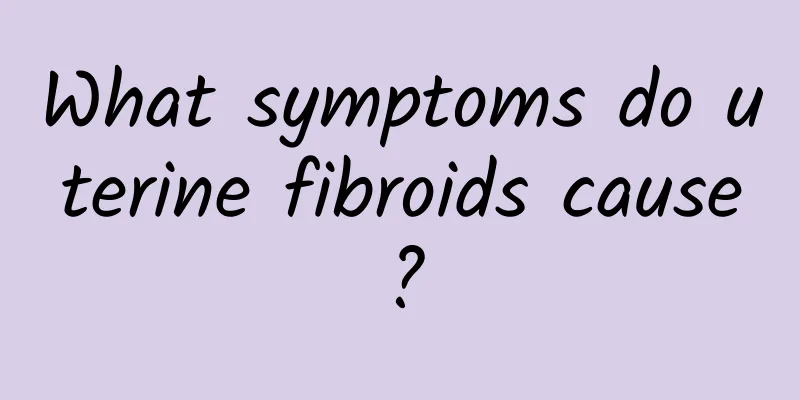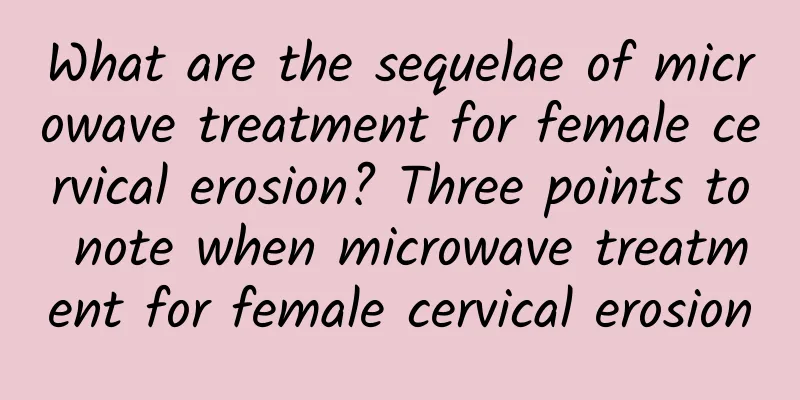What symptoms do uterine fibroids cause?

|
Uterine fibroids are one of the most common gynecological tumors. Their occurrence is related to factors such as hyperplasia of uterine smooth muscle tissue, female endocrine disorders, and high or low levels of estrogen. Uterine fibroids can cause many uncomfortable symptoms. So, what symptoms can uterine fibroids cause? What symptoms do uterine fibroids cause? Because the occurrence of uterine fibroids can have a very serious impact on women, it is necessary to treat them in time to avoid the severity of the disease, which not only causes serious harm to women, but also increases the difficulty of treatment. Women with uterine fibroids will have many uncomfortable symptoms, so what symptoms will uterine fibroids cause? Patients with uterine fibroids generally have the following three typical symptoms: 1. Uterine enlargement: From a gynecological perspective, it should be differentiated from pregnancy. If there is enlargement or symptoms, surgical treatment should be considered. Usually, the standard for surgical treatment is that the uterine fibroids and the uterus reach the size of a two-and-a-half-month pregnancy, or even if it is not this size, but the menstruation is very heavy, and anemia or degeneration caused by ineffective drug treatment should be considered. 2. Menstrual disorders: For example, the change of menstrual volume, different people have different standards. The amount of menstrual volume is mainly compared with the patient himself; under normal circumstances, five sanitary napkins are used during menstruation, and then ten or twenty pieces are used, which is a disorder. 3. Lump: The female uterus is usually located under the pubic bone in the pelvic cavity and is not easy to touch. If the fibroids grow larger, a lump may be felt or there may be pressure, frequent urination, constipation, etc. Clinical diagnosis of uterine fibroids In the early stage of this disease, there are no symptoms. Most of the fibroids may be uterine fibroids. After a certain degree of symptoms or masses appear, they are discovered when the patient comes to the outpatient clinic or for physical examination or gynecological examination. The diagnosis can be made based on clinical manifestations and gynecological examinations with the help of advanced instruments and equipment such as color Doppler ultrasound, CA125, CA199, etc. Kind tips: |
<<: Does the ovarian cyst still need treatment after menstruation?
>>: How to treat premature ovarian failure better
Recommend
What treatments are there for irregular menstruation in different body types? Do people with irregular menstruation in different body types need to be treated differently?
What should I do if I have irregular menstruation...
Teach women some tips to relieve dysmenorrhea
Dysmenorrhea is a headache for many women. Many w...
What is the pain of pelvic inflammatory disease?
Pelvic inflammatory disease is a gynecological di...
Being called fat makes you fatter! The probability increased by 2.5 times
People who are often teased as "fat" by...
Can women drink coffee during menstruation? 6 foods you should avoid
During menstruation, women should not eat spicy f...
What are the factors that cause pelvic inflammatory disease?
Pelvic inflammatory disease refers to inflammatio...
What is cervical atrophy? Medical explanation of cervical atrophy
The appearance of cervical atrophy symptoms has a...
Experts introduce the serious dangers of painless abortion
Painless abortion is a kind of abortion surgery w...
What are the typical symptoms of uterine fibroids? What are the early symptoms of uterine fibroids?
Uterine fibroids are a common gynecological disea...
Let’s not talk about red beans and lemon water for now. Have you ever heard that drinking sweet potato water can also help you lose weight?
The most popular slimming drinks in recent years ...
Endocrine disorders are often the cause of dysmenorrhea
The cause of dysmenorrhea causes people to suffer...
Can cervical warts kill people?
A person's life span is a matter of luck and ...
What are the symptoms of severe cervicitis?
Cervicitis is one of the common diseases among wo...
How long does it take to get pregnant again after a hydatidiform mole?
It is recommended to wait at least one year after...
Choosing a good hospital for abortion
Pregnancy is a very happy thing for every woman. ...









